

The 8th Exhibition: 2015.4.18 - 2016.1.3
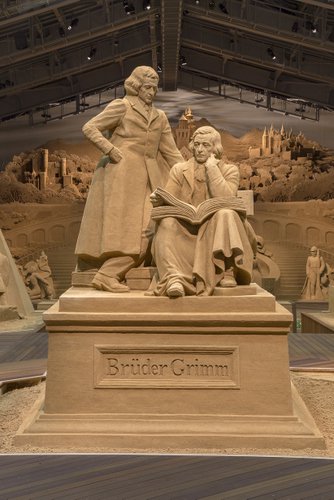
The Bronze Statue of the Brothers Grimm (Memorial of sister-city Hanau)
The Brothers Grimm were born in Hanau that is located in the center of Germany, and published their work in the 19th century. Grimm's fairy tales, compiled by the elder brother Jacob Grimm and the younger brother Wilhelm Grimm, are beloved by lots of people around the world. Originally, the Brothers Grimm were scientists representing Germany in the disciplines of linguistics and folklore, with the conviction to have "a duty to preserve the old language and tradition that started to disappear in the industrialized society". A bronze statue of the Brothers Grimm stands in the market square of their native town Hanau, which is the starting point of the German Fairy Tale Route which leads to Bremen. In 2001, Hanau City and Tottori City established a sister-city partnership.
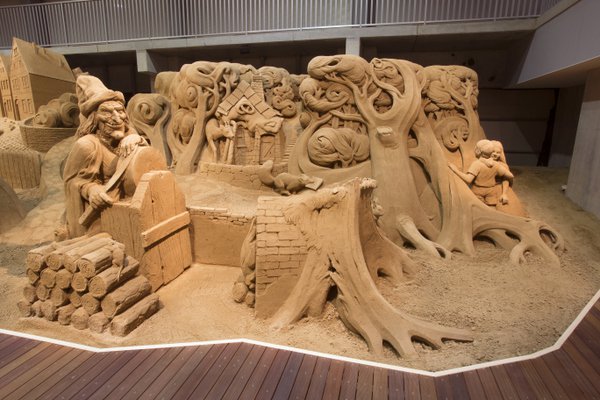
"Hansel and Gretel" (from the fairy tales of the Brothers Grimm)
After suffering a long period from hunger, Hansel and Gretel finally are abandoned by their parents. The two children get lost in the forest, where they discover a house constructed of cake and confectionery. Lured by the delicious looking confectionery, the children are caught by a cannibalistic witch living in the house. To avoid to be eaten by the witch, Gretel decides a plan: she guides the witch in front of the cooking stove, and Gretel thrusts her into the stove with all her strength. Then, the saved children took all the treasures they found in the witch's house with them and went home to their parents. The reunited family was very glad, and thanks to the treasures, they could live in happiness without worrying about hunger anymore.
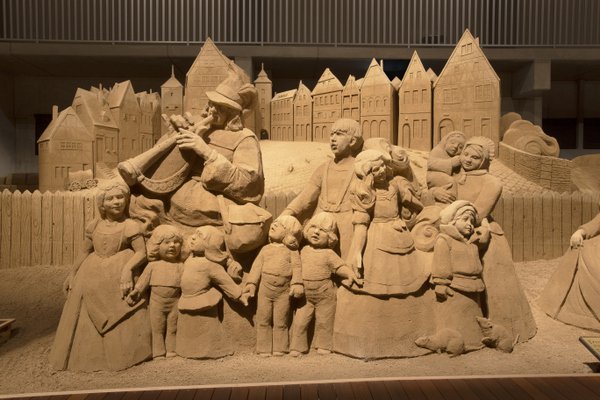
The Pied Piper of Hamelin (from the fairy tales of the Brothers Grimm)
Once upon a time, the city of Hamelin was infested by a terrible plague of rats. Then a pied piper appeared, clothed in many kinds of colors and claimed "I will solve the rat problem with my pipe". The sound of the man's pipe lured the rats to the river where they all were exterminated. But the citizens of Hamelin refused to pay the promised reward to the piper, found fault with everything and chased him out of the town. On the 26th of June, the piper came back to the town and started playing his pipe again, whereupon 130 of the town's children followed him and disappeared - never coming back to the town again. Due to this story, it is told that in Hamelin exist a law which prohibits the playing of pipes at the roadside.
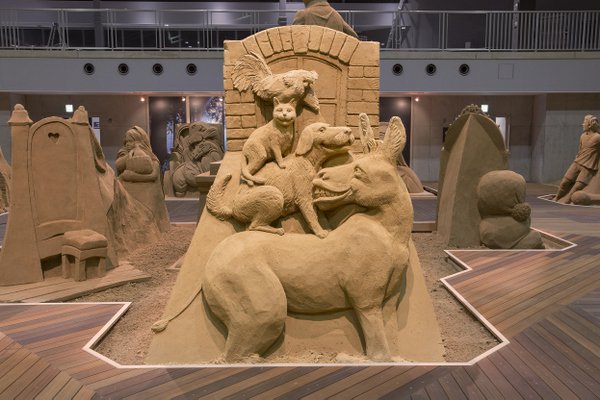
The Town Musicians of Bremen (from the fairy tales of the Brothers Grimm)
A donkey, a dog, a cat, and a rooster, all past their prime years in life and usefulness decided to go to Bremen in order to enter a band. On the way to Bremen, they arrived at a cottage where robbers settled down. The aged animals cooperate and succeed in driving the robbers out of the house. The animals lived together in harmony while performing their beloved music. This Brother Grimm fairy tale tells us how important it is to work together.
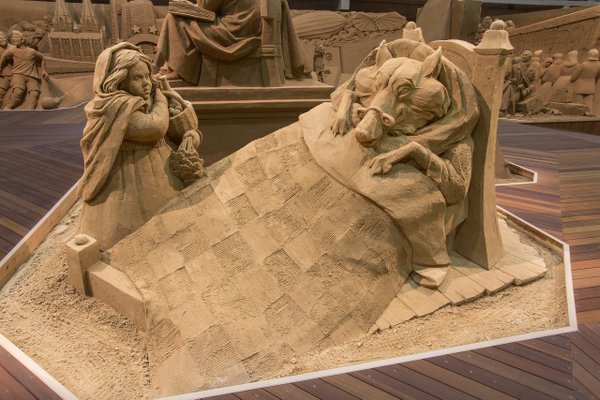
Little Red Riding Hood (from the fairy tales of the Brothers Grimm)
Once there was a princess called "Snow White", so pure and beautiful like snow. Believing to be the most beautiful woman in the world, her stepmother the queen get's extremely upset when the magic mirror answered that "Snow White is a thousand times more beautiful than you" and eventually decides to kill the princess. Snow White passes away after eating a poisoned apple she was offered by the stepmother. The dwarfs who are very sad about Snow white's death, make a glass coffin for her. Enchanted by her beauty, a young prince who saw the dead Snow White kisses her. Thereupon, the poisoned apple falls out of her mouth and Snow White awake from her eternal sleep. This Brothers Grimm fairy tale is famous for the phrase "Magic mirror in my hand, who is the fairest in the land?".
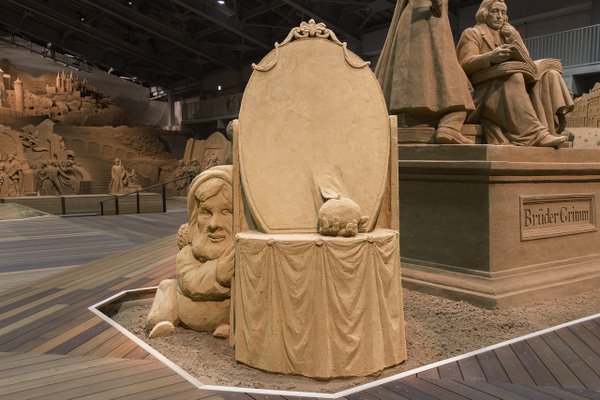
Snow White (from the fairy tales of the Brothers Grimm)
Once there was a princess called "Snow White", so pure and beautiful like snow. Believing to be the most beautiful woman in the world, her stepmother the queen get's extremely upset when the magic mirror answered that "Snow White is a thousand times more beautiful than you" and eventually decides to kill the princess. Snow White passes away after eating a poisoned apple she was offered by the stepmother. The dwarfs who are very sad about Snow white's death, make a glass coffin for her. Enchanted by her beauty, a young prince who saw the dead Snow White kisses her. Thereupon, the poisoned apple falls out of her mouth and Snow White awake from her eternal sleep. This Brothers Grimm fairy tale is famous for the phrase "Magic mirror in my hand, who is the fairest in the land?".
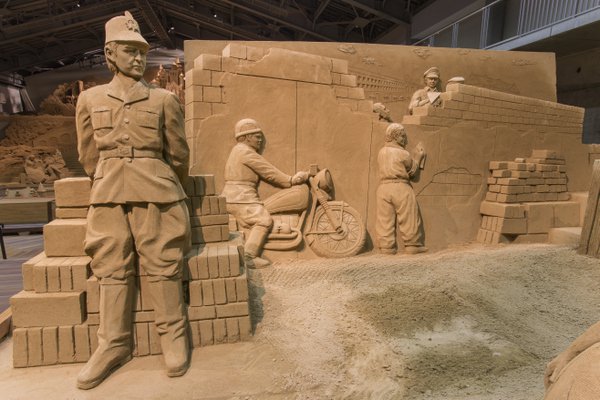
The Construction of Berlin Wall
The Berlin Wall was constructed in 1961 to separate West Berlin from East Berlin as well as from the surrounding areas of East Germany. Germany has been separated into East and West since the end of WW II in 1945. While the economic situation in East Germany grew worse, the West German economy continued its growth. This led to an increase in people defecting from East Germany to West Germany. The government of East Germany felt the pinch of the population outflow and built a giant wall to prevent a further outflow of residents. This wall blocking the boundary line between East and West became to be called the "Berlin Wall".
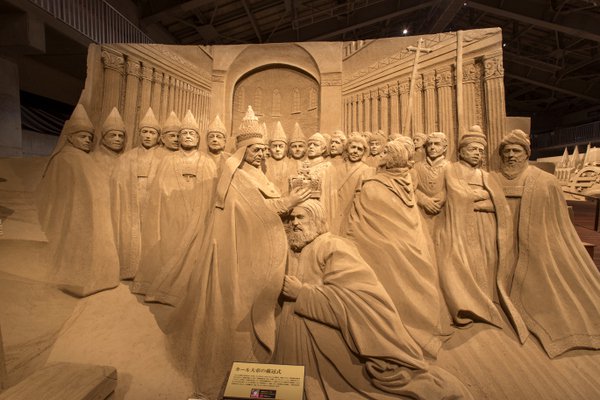
Coronation of Charlemagne
Charlemagne was the second generation king of Francia. In 800 A.D., Charlemagne received the imperial crown of the roman emperor from the Pope in St. Peter's Basilica in Rome. As backgrounds for this coronation, the growing power of the Byzantine Empire (Constantinople) after the collapse of the Western Roman Empire can be mentioned. Also, the Roman Catholic Church, which became independent from the Byzantine Empire, planned a restoration of its rights and wanted the raising Francia as its protectorate. Charlemagne united the whole areas of Western Europe and consolidated education, culture and social discipline and others, what brought political stability in a wide range. Due to these great achievements, he is also called "The father of Europe".
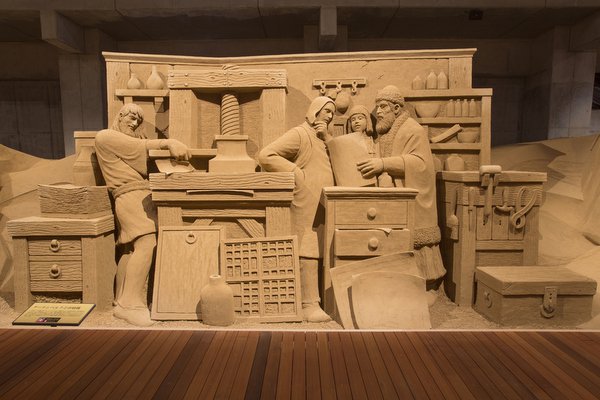
Gutenberg and the Printing Press
Letterpress printing technology is regarded to be developed by the German goldsmith Johannes Gutenberg in the 15th century. Together with the gunpowder and the compass, it is one of the three great inventions of the Renaissance era. Before this invention, books were printed using wood blocks or written by hand, but due to the letterpress printing technology, where types are rearranged to make a plate, it became possible to easily publish books in large quantity. The Gutenberg Bible, that was printed using this technology, was handed to a great number of people. This made the bible becoming more familiar to the people. Also, regarding the Reformation that occurred in the following 16th century, it is assumed that letterpress printing technology has contributed a lot to the spread of Luther's principles and thoughts.
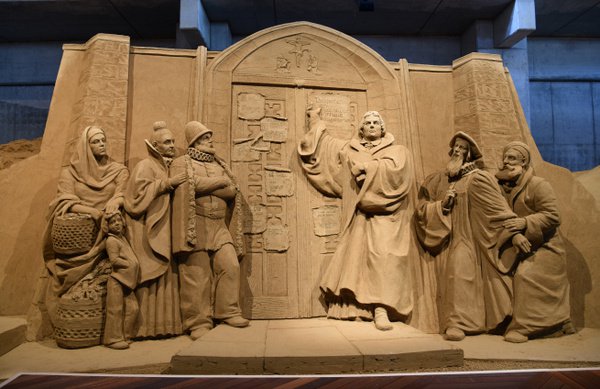
Luther and the Reformation
Martin Luther was the man who reformed the council system in the Christian sphere in the 16th century. Luther, who was a devout Christian, was dissatisfied with acts that disdained the graces of Christianity, such as the secularization of the Roman Catholic Church or the corruption of clergymen. To criticize the sale of indulgences (letters under the authority of the church to relief sins) by the church aiming fundraising, he published his 95 theses. This act led to his excommunication as a heretic, and subsequently, he devoted to the ideology of his thesis and the writing profession. Soon he completed a German version of the bible. His translation was easy to understand also for common citizens and was spread to various places using the letterpress printing technology. Later, this incident also contributed to the further development of the German language and reforms of the society.

Castles of Germany (Neuschwanstein Castle, Hohenzollern Castle and the old castle at the Rhine riverside)
The luxurious and gorgeous Castle of Neuschwanstein is stuffed with the dreams of the aloof King Ludwig II of Bavaria, who strongly admired mediaeval knights. The castle's green forests and chalk silhouette are of superb beauty. The Flying Castle of Hohenzollern was protected by the noble House of Hohenzollern, that turned out countless generations of German emperors. As the name indicates, it is shrouded in a sea of clouds and shows a picturesque scenery. Even now, there are thousands of castles in Germany and together with the ruins, their number exceeds 20 000. The beauty of the riversides of the Rhine, Donau and Neckar consisting of great nature and castles, are together, each with the townscape and the landscape, like stages for many stories. Even by only visiting them, the people are taken to the world of fairy tales and the fairyland, and the shape of these areas even now fulfills their visitors with dreams.
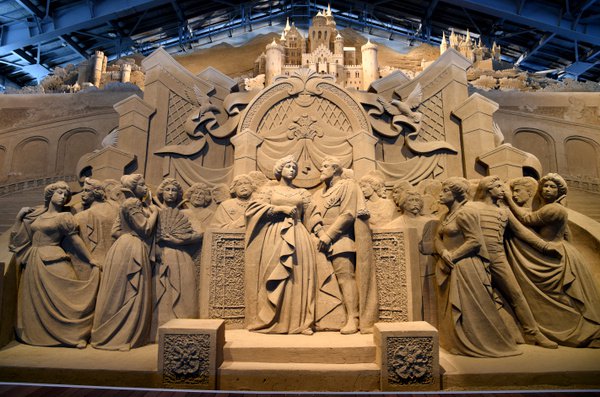
Court Scenery
The Bavarian Kingdom in the 19th century consists the stage of this work. The relationship between Prussia and Austria gets complicated and finally developed to the Austro-Prussian War, and Germany made its first step to its unification. But the young King Ludwig II of Bavaria, who loved art and lived in his own utopia, couldn't stand the hard reality of war. Escaping more and more from the reality into the world of art and music, he materialized one of his dreams of his early childhood, the legend of Lohengrin, in constructing Neuschwanstein Castle. The world view which Ludwig II pursued and the scene of the dance ball, appearing in the fairy tale "Cinderella" of the Brothers Grimm, overlap in this work, expressing a scene of a modern German court.
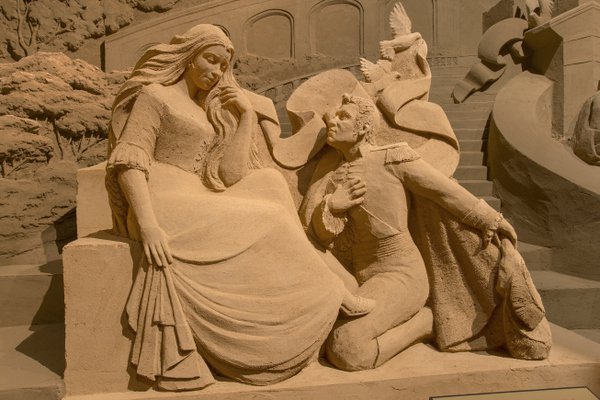
Cinderella (from the fairy tales of the Brothers Grimm)
Once there was a beautiful princess with a wealthy father and a gentle mother. But her fate changed massively as her mother passed away because of a disease and her father married again. The days began from now were so painful that she was called "Aschenputtel", what means "ash covered girl". Her freedom was taken by her stepmother and elder sisters who forced her to work from morning to evening, and every day, she shed her tears in front of the grave of her mother. Her tears fell onto a little tree branch that developed into a splendid tree. Small birds gathering at this tree comforted her. Thanks to these small birds, she could take part in a dance ball, where she got to know a prince and spent a dreamlike time. Returning to reality after this brief moment of happiness, with the aid of a pair of golden shoes she finally could meet the prince again, and the two married in happiness. This fairy tale is famous as "Cinderella" in the whole world.
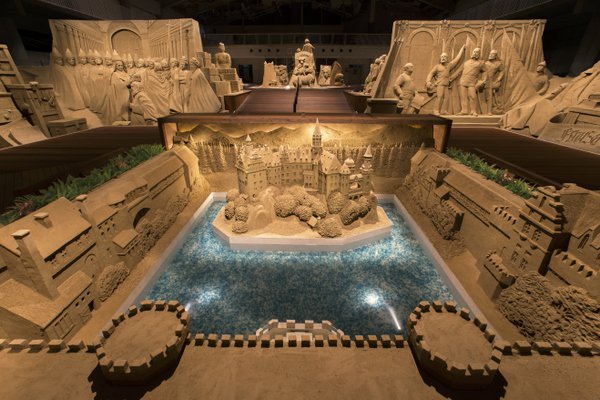
Sigmaringen Castle and a medieval fortress
In the center of this work is Sigmaringen Castle, that was the residence of the House of Hohenzollern-Sigmaringen, a branch of the House of Hohenzollern. With the surroundings filled up with water, this work expresses the castle's grace shape when viewed from the Donau riverside. Arranged that it looks like it enclosed the surrounding area, the rampart is inspired by fortress towns like Rothenburg. In mediaeval Germany, commercial and trade men gathered in the fortress towns what led to a development of industry. The people engaged in commerce and trade were called "Bourgeois", meaning "citizens living inside the fortress". The etymology of this word is regarded to be "Burg", meaning "fortress".
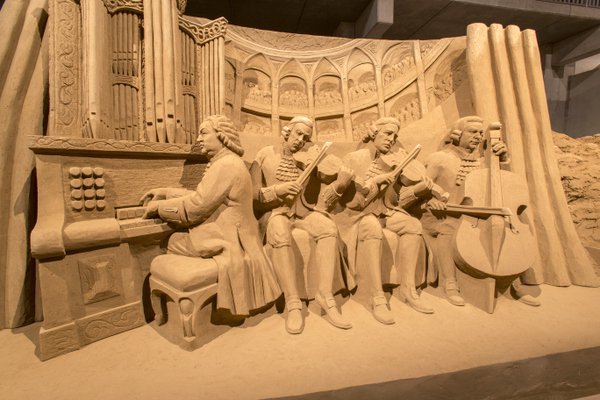
German Music (Bach and Baroque music)
Johann Sebastian Bach was a composer of the 18th century. Being regarded as the greatest musician of the Baroque era, he is also called the "Father of music" since he created the foundation of western music. Baroque music indicates the music style from the 17th to 18th century in the history of music, and is characteristic of containing more pathetic and dramatic expressions than the previous Renaissance era. Although the following Classical and Romantic era gave rise to many great musicians that colored the face of German history, most of them are considered to be influenced by Bach. This year is the 330 anniversary of Bach's birth, and he still fascinates masses of people.
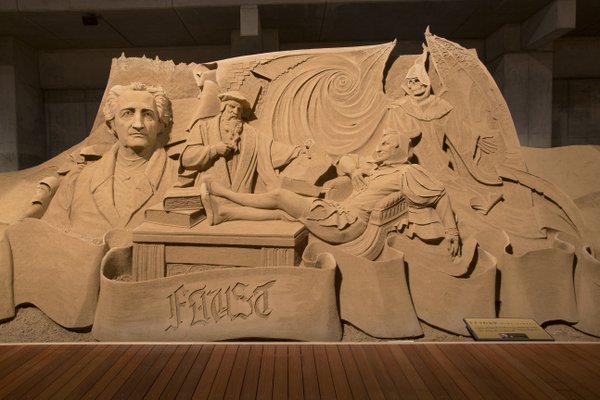
German Literature (Goethe's "Faust")
Goethe is famous for publishing numberless masterpieces from the second half of the 18th century to the beginning of the 19th century. His work is regarded to have had a great influence on the society of those days. Among his works, "Faust" can be called his masterpiece he wrote all through his life. It illustrates the story of Dr. Faust, a person that really existed. This sculpture shows the scene where Faust signs the contract with the demon "Mephisto" on the assignment of his soul after death, in exchange for the possibility to experience all joy and sorrow of the human life.
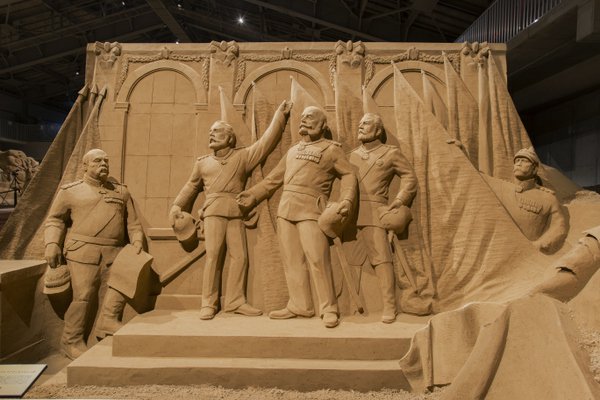
German Unification (Bismarck and Wilhelm I)
By means of the Vienna Protocol of 1815, the German Confederation was founded as a federation of a number of states, and finally there was an opportunity to unify these states. The confederation consisted mainly of the two superpowers Kingdom of Prussia and the Austrian Empire, but Bismarck, the chancellor of Prussia, pursued the unification of Germany with Prussia at the top and was willing to achieve his goal with military power. This gained him the nickname the "Iron Chancellor". After the victory in the war against the Austrian Empire, the Kingdom of Prussia dissolved the German Confederation and founded the Northern German Confederation. This confederation became the basis of the German Empire founded in 1871, with Wilhelm I of Prussia as emperor.
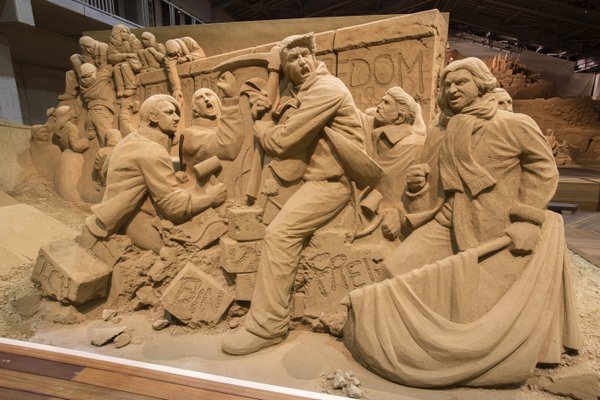
Fall of the Berlin Wall
After the border between Hungary and Austria was opened in 1989, the number of persons defecting from East Germany via those countries to West Germany and other countries in Western Europe increased. At the same time, demonstrations in East Germany spread as an opportunity to seek for freedom. The East German government could not suppress these movements, what finally led to the declaration of freedom to travel. The people of East Germany who got to know this news, advanced in force onto the wall. Finally, the giant wall which existed for 28 years fell and the reunification of Germany was achieved. This year is the 25th anniversary of this non-violent revolution initiated by the people.
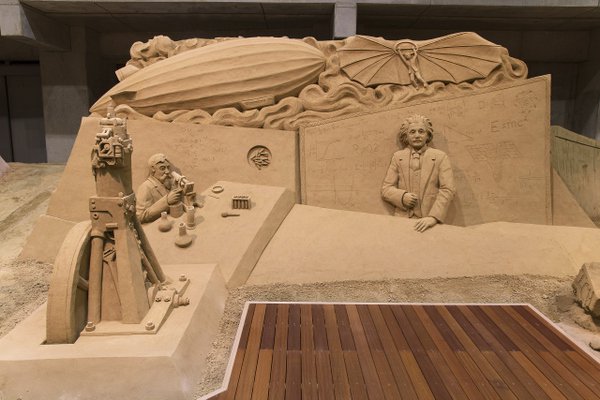
German Science
In the front, the diesel engine invented by Rudolf Diesel is exhibited. The right-upper of the work shows the first successful manned-flight by Otto Lilienthal using a glider. On the left side, there is the rigid airship of Count Zeppelin, who made this industry so flourishing that his name became a synonym for airships. Under it, there is a sculpture of Robert Koch, who is the founder of the modern bacteriology, such as anthrax, tuberculosis or cholera. Finally, in the right-lower, Einstein appears, famous for his general theory of relativity and special theory of relativity. In 1921 Einstein was awarded the Nobel Prize in Physics for his photon hypothesis. This advanced technological power was a foundation stone for Germany's rapid reconstruction after WW II.
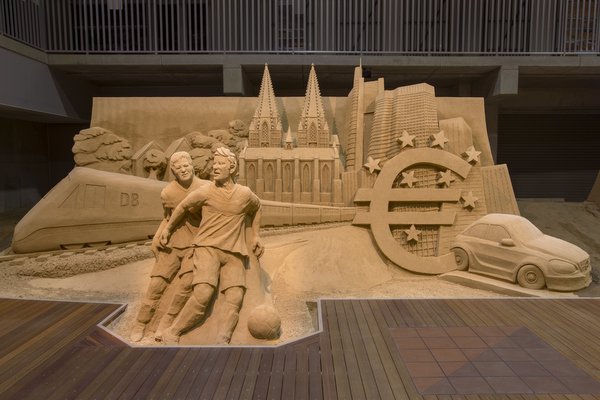
Contemporary Germany
Nowadays, Germany is increasing its presence as a leading economic superpower in the EU. On the right of the work, the central bank of the euro area ECB, which has its headquarters in Frankfurt, and its logo are arranged. The center of the work consists of the world heritage Cologne Cathedral, visited by crowds of tourists. The high-speed railway ICE, which connects several areas in the EU with Germany in the center, appears in the left of the work. This railway plays an important role in expanding the personal exchange in the EU. Further, Germany is one of the world's leading football powers and a great number of Japanese players performs in the domestic league "Bundesliga". Germany makes great efforts to play a central role in the contemporary world where a massive exchange of people, goods and culture occurs not only in Europe but in the whole world.
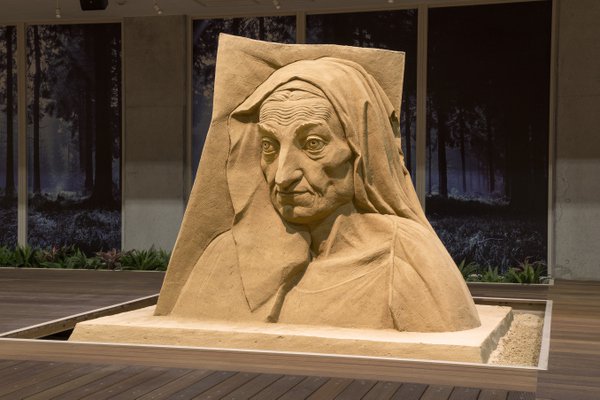
-1 German Art: "Portrait of the Artist's Mother" by Albrecht Dürer
Albrecht Dürer was a painter of the German Renaissance era and is the greatest painter in German art history. The movement of the Renaissance that began in the 14th century in Italy, also spread to Western European countries and was called "Northern Renaissance". After his apprenticeship in Italy, he immediately started distinguishing himself and became a representative painter of the Northern Renaissance and in 1542, he became the court painter of Emperor Maximilian I. His delicate and accurate style is always beautiful, whether it is a wood block print, watercolor painting or an oil painting, and it won distinction not only in Germany but also in surrounding countries. The motif of this work is the "Portrait of the Artist's Mother" which Dürer painted in 1514.
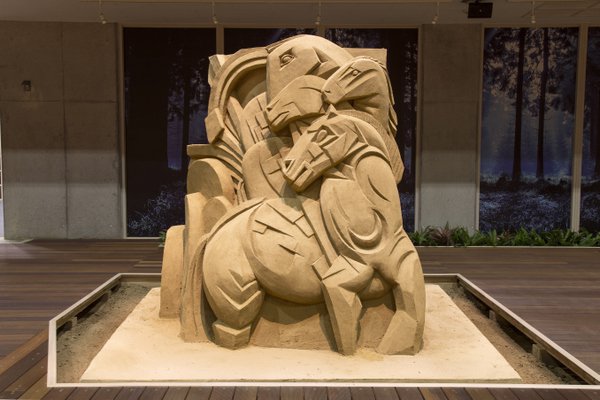
-2 German Art: "The Tower of Blue Horses" by Franz Marc
Franz Marc is a widely known German painter who organized the German expressionism group "Der Blaue Reiter" (The Blue Rider) together with Kandinsky. As he disliked the society being driven by materialism and rationalism, he liked to paint animals, pure and spotless creatures. Because he was strongly influenced by the vivid expressions of Gogh, his style developed into an abstract direction pursuing more "freedom". He continually did research to find out about the effect colors cause and established his characteristic world view in "averting from the colors of reality and painting things in a different color".
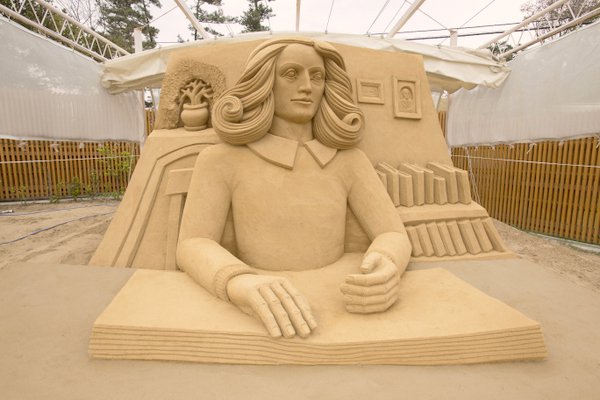
The Diary of a Young Girl
The stage of this story is a hideaway in Amsterdam, the Netherlands that was occupied by Germany during WW II. This diary-formatted literary work compiles the notes of Anne Frank, a German girl with Jewish roots. To escape from the German persecution of Jews, she had to live in hiding for a long period of time. Even she was in an environment where it wasn't allowed to make the slightest noise, Anne's way of life, keeping her hope for the future and aspiring for peace, is expressed in her text. Although this diary that draws vividly the conflicts and the growth of the young girl is preserved, Anne passed away at the age of 15 in a concentration camp. After the war, her father Otto made every effort to publish "The Diary of a Young Girl" which became a bestseller. From this work the sensitive young girl composed, lots of people gain great hope and are deeply impressed, also beside of the fact of the holocaust.
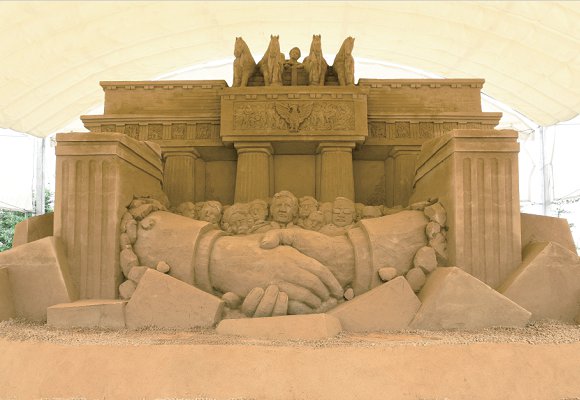
Brandenburg Gate
2015. Japan/Katsuhiko Chaen
